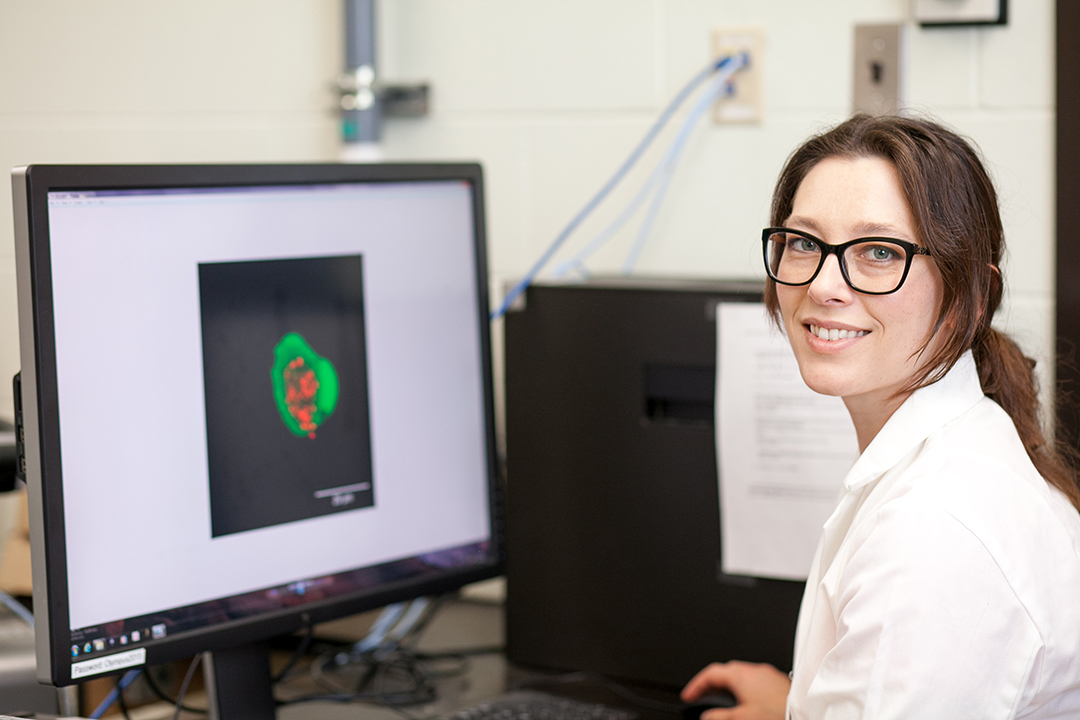
WCVM equine study first to show wound healing after stem cell therapy
A team of researchers at the Western College of Veterinary Medicine (WCVM) has published the first equine study to demonstrate changes in wound healing following stem cell therapy.
By Myrna MacDonaldTheir findings were recently published online in Cells, an international open access journal. Team members include PhD student Dr. Suzanne Mund along with WCVM faculty members Drs. Daniel MacPhee, John Campbell, Ali Honaramooz, Bruce Wobeser and Spencer Barber.
The researchers used intravenous (IV) treatments of multipotent mesenchymal stromal cells (MSCs) that were extracted from other horses. These stem cells have potential for improving wound healing because they can alter the body’s inflammatory response, which is involved in healing. They can also influence other local cells to produce growth factors that could enhance the speed and quality of wound healing.
MSC therapy is a promising treatment for limb wounds, a common injury in horses that often develops complications. One of the main issues with limb wounds is the production of an excess amount of granulation tissue, commonly known as “proud flesh.” But there are risks associated with IV administration of MSC, and so far, the therapy’s effectiveness in improving cutaneous wound healing is unknown.
The WCVM research team was successful in administering the highest dose of MSCs ever administered to horses enrolled in the study (using any type of delivery). Contrary to the team’s hypothesis, the treated horses did not experience accelerated wound closure or improved histologic healing. However, the horses’ healed wounds did have smaller immature scar sizes, which may signal a better repair in terms of cosmetics and function.
The stem cell therapy also appeared to alter the cytokine profile within the horses’ wounds. Cytokines are small proteins that play a role in controlling the growth and activity of other immune system cells and blood cells. After treatment, there was less expression of all measured cytokine types except for antifibrotic mediators. This finding is contrary to researchers’ understanding that more acute inflammation — followed by rapid resolution — improves limb wound healing.
Another concern was that several of the horses in the treatment group temporarily developed minor reactions after receiving the stem cell therapy. Since one horse in the control group also experienced similar transient reactions, the cause may be related to the cell suspension solution used or to other external factors rather than to the cells themselves.
While MSC intravenous therapy has the potential to decrease the size of limb wounds in horses, researchers need to do further studies before this therapy can be recommended as an effective wound healing tool for veterinarians in the field. More work also needs to be done to understand the clinical relevance of adverse reactions that were observed in the study’s horses.
This study received funding from the Mark and Pat DuMont Equine Orthopedic Fund and the WCVM’s Townsend Equine Health Research Fund (TEHRF).
Reference: Mund SJK, MacPhee DJ, Campbell J, Honaramooz A, Wobeser B, Barber SM. “Macroscopic, histologic and immunomodulatory response of limb wounds following intravenous allogeneic cord blood-derived multipotent mesenchymal stromal cell therapy in horses.” Cells. Nov. 2021. 10(11):2972.
